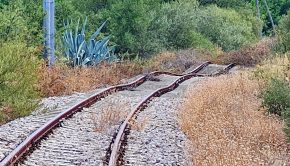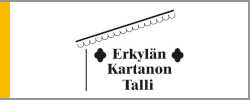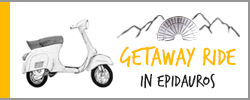Getaway ride in Epidauros: the walls of the Mycenaen fortress of Kazarma
Were the Mycenaeans the first Greeks? At least their written language, the so called linear B, is the first known form of greek language. It was used about 3800-3000 years ago. This in my mind I followed a native Ligourian, Vasilis Prountzos, on an evening hike to the top of a hill named Kazarma. “Kazarma” is a derivative from italian language [casa di arma, military baracks] but the fortress on top of the hill dates back to the Mycenaean period. The climb is not tough – height of the hill is only 280 metres – but demands good shoes and good balance. I loved it.
*** *** ***
Text and pictures copyright: Margit Ticklén, 2021. No reproduction allowed.
Epidauros, 9th December 2021
Sure. The effort is easy to make. It takes about 20 minutes to get to the top of the fortress from the nearby road. The one which leads from the church of Agios Ioannis (village of Arkadiko) to Metohi. The same time is needed if one starts the hike at the Mycenean bridge of Arkadiko (/Kazarma).
Not a big effort and really worth of doing: the view from the top of the hill Kazarma extends from Mount Kynortion (Ligourio) in the east to the Gulf of Nafplion in the west. When contemplating the olive groves down and around the hill one doesn’t need any explanation why the fortress was built where it is. From Kazarma it is possible to controle a great part of the road leading from the plains of Argos to the port of Palaia Epidauros.
To come to it you have to drive 15 kilometres east of Nafplio, 10 kilometres west of Ligourio.
Before thinking about the view you have to climb a rocky path.
Path is a lot said… Actually, for the last 200 metres, there is no path. There are big rocky formations on which you can walk. Be also prepared to jump from one rock to another (LOOK AT THE VIDEO HERE).

Great engineers’ work
Prountzos and me, we didn’t find the climb difficult. We had got to know each other in the summer during some hikes made with the Pezoporiki omada of Ligourio (hiking group of Ligourio).* We enjoyed every step off the beaten tracks.
This mention is justified in Kazarma. Unlike the nearby site of Mycenae the fortress of Kazarma has not been, at least not extensively, excavated. When walking inside the walls of the fortress one steps constantly on pieces of ceramics which have the typical Mycenean colour patterns on them.
Everything in Kazarma is impressive.
The height and depth of the walls: 5,20 metres and over 2,5 metres. The size and shapes of the stone blocks used to construct the walls: some of the stones weigh eight tonnes, some are of triangular shape.
When we reach the eastern gate of the fortress Prountzos reminds me of the fact the Mycenaeans were great engineers.
“The Mycenaean bridges nearby here are built for chariots to pass. Therefore the construction had to be strong. The Mycenaeans used the relieving triangle as well in their bridges as in the walls of their fortresses”, Prountzos says.
We admire the cut of the stones of the walls. I feel a look is not enough. I touch the stones. Their edges are not sharp.
“We call this type of building the polygonal masonry. Because of the shape of the stones: they are at equal level outside of the wall. Inside they are not, they are left completely rough”, Prountzos explains.

In use for 3000 years
Polygonal masonry. I am at first disappointed to hear that.
One of the few things that have remained alive in my memory about my studies of classical archaeology in the 1990’s is the content of The ten books about architecture. It was written by a roman architect called Vitruvius. Quite exactly 2000 years ago.
I remember Vitruvius talking about the Cyclopean wall.
Walls were Cyclopean when they were built with massive limestone boulders, roughly fitted together with minimal clearance between adjacent stones and no use of mortar.
I remember this because the Cyclopes were gigantic, round-eyed mythological creatures. They attracted my imagination.
I tell my disappointment to Prountzos. He laughs and points to the tower beside us. It is round in shape. The walls built from big blocks of stone are slightly incurved.
“There are many layers of construction here. Also the one you would like to hear about. And even some Byzantine additions. It’s natural. This fortress has been constantly in use for at least 3000 years”, Prountzos states.

Authentic ceramics?
We get inside of the walls by the eastern gate. Prountzos is not inside the fortress for the first time.
“i think there are four towers in this fortress. And the main, very massive and impressive entrance was from the west. Lets walk around the fortress and see if I am right”, he proposes.
Said and done! We start walking on top of the five-meter-high walls towards the west.
Very soon Prountzos is stopping. He pushes something on the ground by the tip of his shoe.
He is delighted:
“Look at this ceramics! It’s not impossible it dates back to the Mycenaean period. The colours are the same I have seen in the archaeological museum of Nafplio”.
I can’t believe me eyes. Of course we don’t know whether our thoughts are correct or not. Could be – because the area has not been excavated.
We leave the pieces we find on a stone so that the other visitors can see them as well.


We are the wanax today…
I have to admit the fortress (or the acropolis) of Kazarma is for me much more an exciting site than better known Mycenae or Tiryns. More authentic.
Prountzos knots his head.
“If we could go under the earth we would certainly find a l,ot of interesting things. The Mycenaean fortification systems often had technical refinements such as secret cisterns, galleries, sally ports and projecting bastions… Everything to protect the gateways. Now we can’t see any of those. They are filled with soil”, Prountzos believes. [163],,
After a 10-minute minutious walk – there is a lot of vegetation on top of the walls – we reach the western end of the fortress. Remains of a massive tower are to be seen beside a gateway.
“THIS is the main entrance”, Prountzos shouts and jumps into the ditch.
For a while I can’t see him. Then he climbs to the tower basement,
He rises his hands as a sign of victory – for a moment we feel like the ancient Mycenaean kings, the wanax. Rulers of the surrounding olive groves and a lot more…
“Yes. A lot more”, admits Prountzos. “The Mycenean period was the period of the Troyan wars, of the war Seven against Thebes. It was the period Homer is describing in Iliad.”

The sacred snakes on my shoulders
I sit on a stone on the other side of the gateway. Prountzos is talking from the tower basement.
The Sun starts to go down. We know we soon have to get going back to the car.
“I don’t want to leave this place, Vassili. I want to stay here. I want to keep this peace, this silence. The sacred snakes on my shoulders like the poem says”, I cry.**
Prountzos smiles.
“We’ll return here. There is a whole pathway to do from the village of Arkadiko to the acropolis and further to the four Mycenaean bridges. And down in the village there is also a shaft grave. Like in Mycenae, but smaller in size. We’ll see them another time. We’ll need some 2-3 hours more for that”, he says.
I’m relieved. We can start our return hike from the fortress.
“Think about people who lived here 3000 years ago”, Prountzos mumbles.
“They knew maybe less things in quantity than we do. What they knew they knew it thoroughly. They had to. There were no machines to count if the keystones of their gates and bridges were to remain in place. They have done so for all these years… And for how long do we project our modern constructions to hold their strength? 100 years? Maybe 50 years. We are a disaster.”
I look at Prountzos. I very much appreciate his conclusion. And him. What a great GREEK companion to discover the nature and historical sites of Ligourio.
And where did I meet Prountzos? Having a walk with Pezoporiki omada tou Ligouriou! Read about the group below – and feel free to join it.

** A poem by finnish poet Pentti Saarikoski in the book Dance floor on the mountain.
Text and pictures copyright: Margit Ticklén, 2021. No reproduction allowed.
READ MORE ABOUT…
– GETAWAY RIDE IN EPIDAUROS (link)
– MY LOVE FOR LIGOURIO (link)
PRACTICAL INFORMATION:
Name on the map: the acropolis / fortress of Kazarma
Situated nearby the ancient road leading from Ligourio to Nafplio,
in the village of Arkadiko.
Height 280 metres.
The size of the fortress approximately 85m x 60 m.
Hight of the walls 5 m, width 2,5 m.
The construction period extends from Mycenaean (1000 BC) to Byzantine (1000 AD).
Can be reached from the CULTURAL PATH of EPIDAUROS nr. 5 (link)

*PEZOPORIKI OMADA OF LIGOURIO
A group of 30 active ligourians who meet each other 1-3 times a week to have a walk or a hike in the surroundings of Ligourio / Palaia Epidauros / Nafplio.
No fees – the announcement of the walks is done by a Viber group and the Facebook site (LINK) of the group.
Head of the group is Dimitris Kaftanis. Most of the walks are accompanied and led by Vassilis Bibis.
The aim of the group is not as much sportif as convivial. So don’t expect a sweaty round! The distances covered are from four to ten kilometres.
The tempo of the walks is suitable even for families. Difficulties of landscape vary but are written down when the walk is announcd for the members.

TAXI/ HOTEL / TAVERN in Ligourio:
– TO TAKE A TAXI in Ligourio
call +306936800445 (Georgios)
– TO STAY AT A HOTEL near the theatre
call +306988026060 (Avaton)
– TO EAT in Ligourio
call +302753022072 (T’Asteria)


















